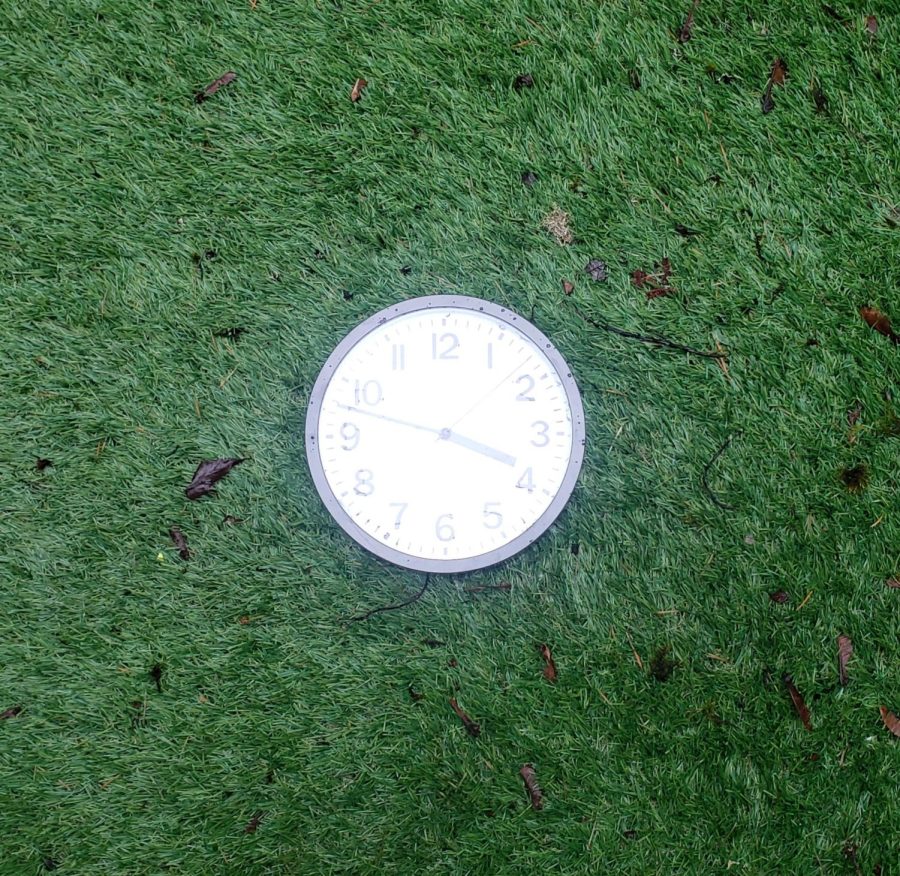Time is Running Out for Daylight Savings
March 24, 2023
Recently, we moved forward an hour due to daylight savings time. From this change, gain an hour of sunlight, which is quite nice. However, we also lost an hour of sleep, which is difficult to adjust to.
There have been several attempts to end changing the clock twice a year. We currently have it like this: spring forward (second Sunday in March) and fall back (first Sunday in November). The Sunshine Protection Act is said to end this yearly tradition by setting the permanent time as what we have in March, the spring forward. But first, let’s look into the history of this odd tradition.
It all started during the first World War when Germany and Austria pushed the clock back one hour on April 30th, 1916. The idea behind this was to gain more sunlight and spend less energy. Other countries would follow suit with Germany and Austria; such as the United States which followed along on March 19, 1918. Many people in the United States disliked the idea of daylight savings to the point where the mandate ended in 1919. Some states did keep observing daylight savings time, but it wouldn’t become a nationwide mandate until February 9, 1942, when daylight savings time was year-round. This time was called “War Time,” and it lasted until 1945. From 1945-1966, there were no laws requiring states to observe daylight savings time (DST), and states were allowed to start DST at any time. This would cause a lot of confusion, but that’s where the Uniform Act of 1966 comes into play.
The Uniform Act of 1966 made it so that there was one pattern throughout the nation. Basically, everyone would experience daylight savings at the same time. Yet, some U.S. territories, such as Arizona, Hawaii, Guam, and others, don’t observe daylight savings. These territories are typically sunnier than the rest of the U.S., so DST doesn’t really make sense for them. States can opt out of observing daylight savings, but they can’t stay in daylight savings time. They must instead stay in standard time — which is the uniform time of certain places in the same longitude.
The Sunshine Protection Act was first introduced in 2018 by Marco Rubio, a Florida senator. It failed during that year, again in 2019, and again in 2021. It did gain success in 2022 when it passed with a unanimous vote in the Senate. But, the House of Representatives didn’t vote on it. Now in 2023, Rubio has reintroduced the bill once again. This bill would make it so that we were always on DST, so we will always be ahead of standard time by one hour. But health experts are actually against this permanent DST.
While the Sunshine Protection Act is supposed to help promote outdoor activities and overall productivity, this can actually cause various health issues. Our bodies naturally align with standard time, not DST. So shifting to DST is catastrophic to our circadian rhythm — our body’s inner clock. If our body is misaligned with the sun itself it can make essential activities, such as sleeping and hormonal control, a more challenging task. Having permanent DST will also cause darker mornings in some states, which will be pretty dangerous for the youth trying to get to school.
In short, permanent DST is bad for our health but good economically, permanent standard time is healthy and natural for our bodies.
As of now, the bill has only been reintroduced into both the Senate and the House of Representatives. There has been no news as to when Congress will vote on this bill, so we will have to wait to see what happens to this bill.



